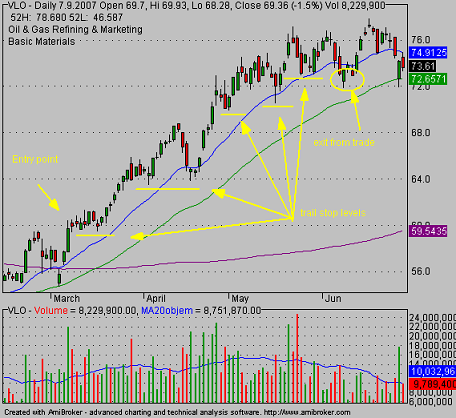The best traders use some form of trailing stop loss management. Proper trade management rules that decrease risk as the trade develops in time should be part of a stock trading business plan. Using and trailing stop loss orders is one part of this plan.
Trade management is sometimes overlooked by traders or active investors. But stock trade does not finish by opening position. You should monitor trade development and acts accordingly. It often means trail exit level as your trade develops.
Good stock trading system should have incorporated rules how to trail risk level during trade development to constantly decrease risk of losing money.
Check your risk as a trade develops
As soon as you move your stop level into values slightly above your entry level you’ll feel less stress. This is because you already know that your trade won’t finish with a loss.
You must know how to use a (trailing) stop-loss order with your broker.
One important issue regarding trade management and stop loss trailing process is constant check of risk reward ratio also during position development. This ratio should be always in favor of possible profit. It means that risk of moving the price from today’s level to stop loss should be always less that possible reward that can be achieved by move to the target level.
You have to check this ratio and use stop loss trailing process often when you have open some positions in your portfolio.
Using a trailing stop loss
The general rules say that the stop loss value can be set below the last support or above the last resistance in the trend movement. Moving averages are also used very often as a trailing value of support or resistance. Your exit level could be set near them.
Rules for trailing the stop can vary based on trade type, time frame and also the volatility of the shares you use.
Here is example of setting exit risk levels during a stock uptrend:

Three trailing stop loss tips
I like to move my stop loss level above the entry point (break-even) in case that share price moved already at least to 50% of the distance between my setup entry and my expected target value.
I definitely want to have my risk level – my stop loss – moved above my entry (in long trade) if I already reached 2R profit level. 2R means twice the amount I risked in this trade from the beginning.
Prepare trade management rules in advance as part of your stock trading system. They should include also stop-loss trailing process.
Find more on related pages
- Master basics of using a stop loss
- Explore how to place stop loss orders
- Read more details about profitable stock trading systems